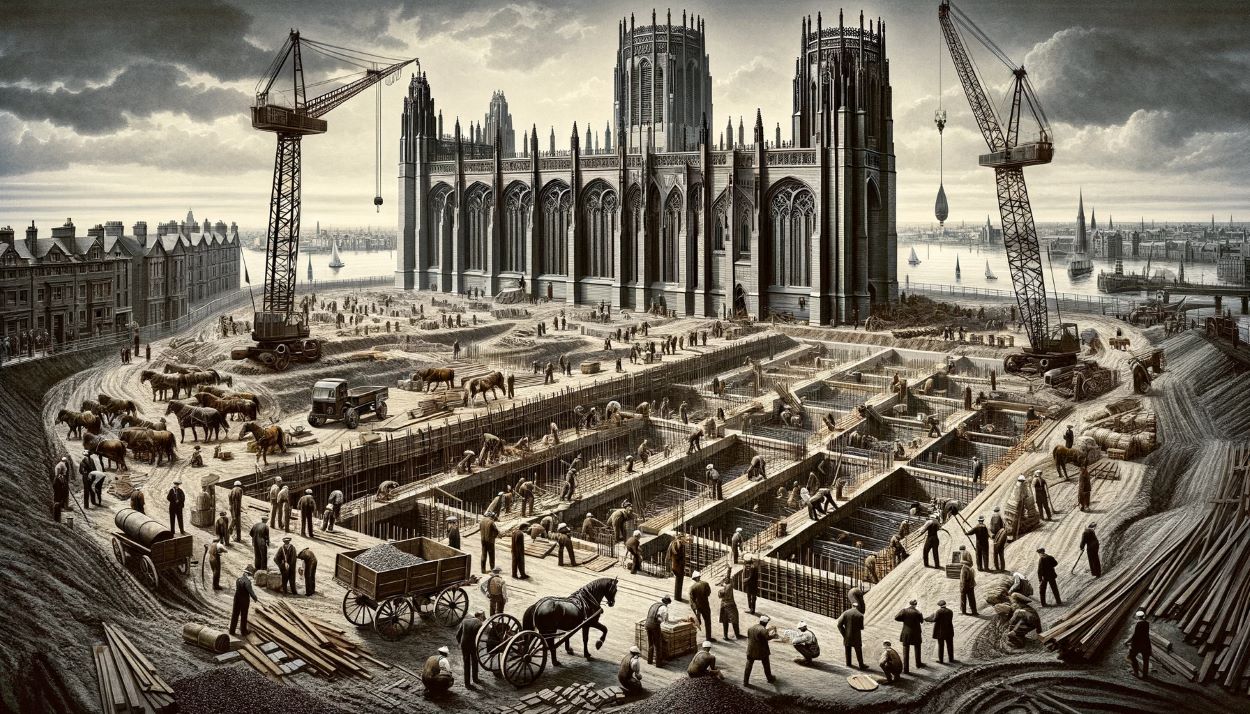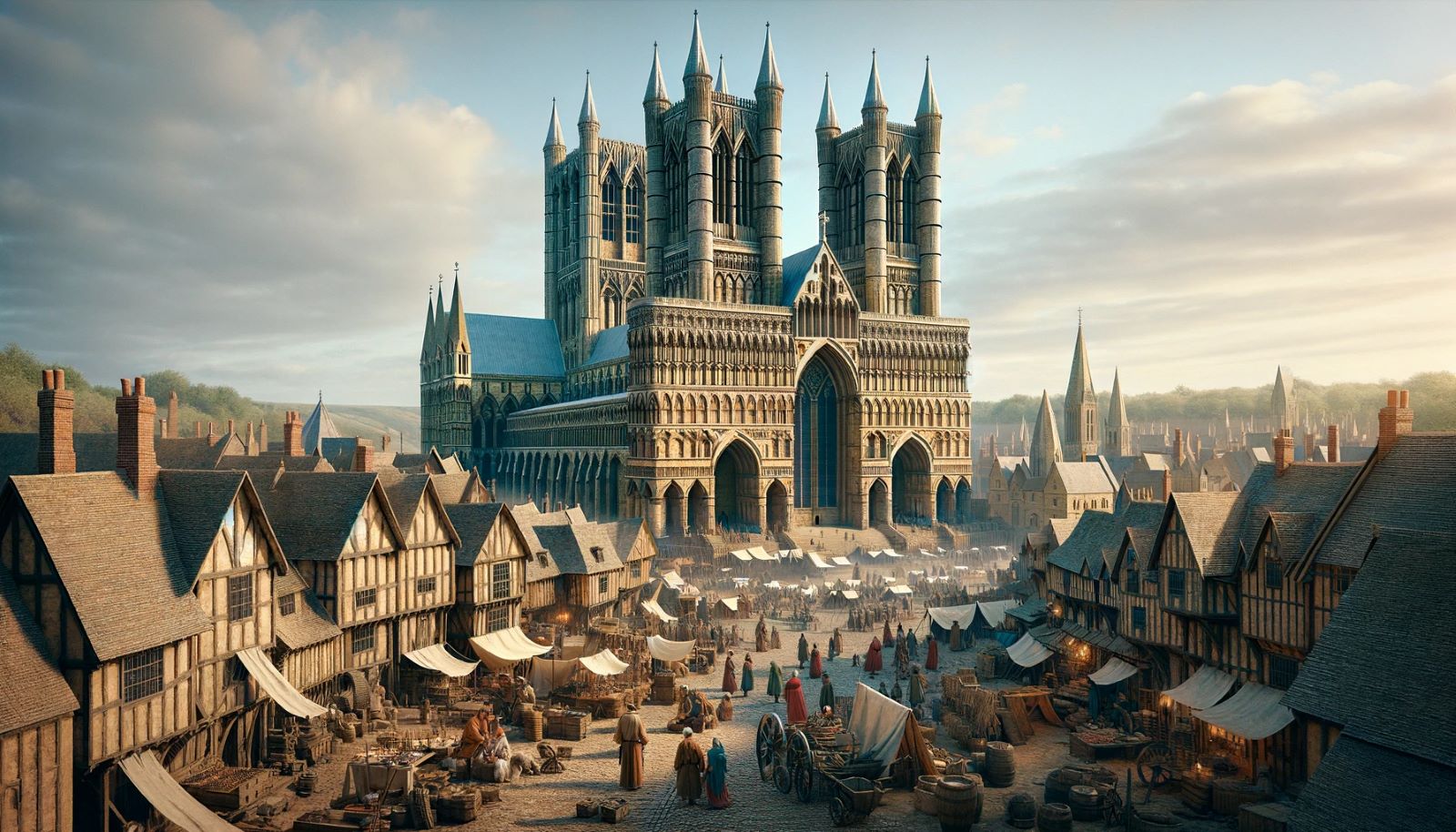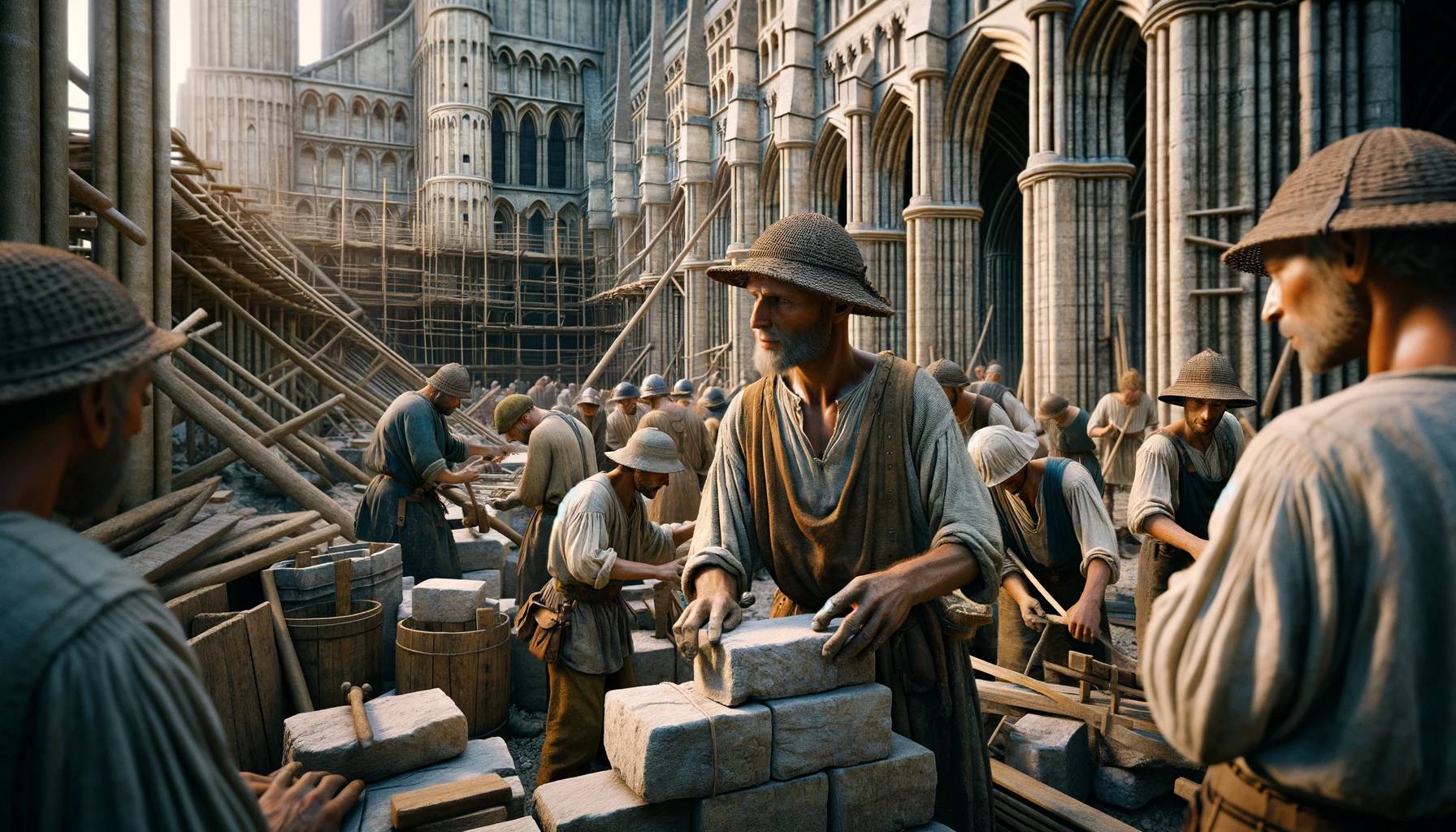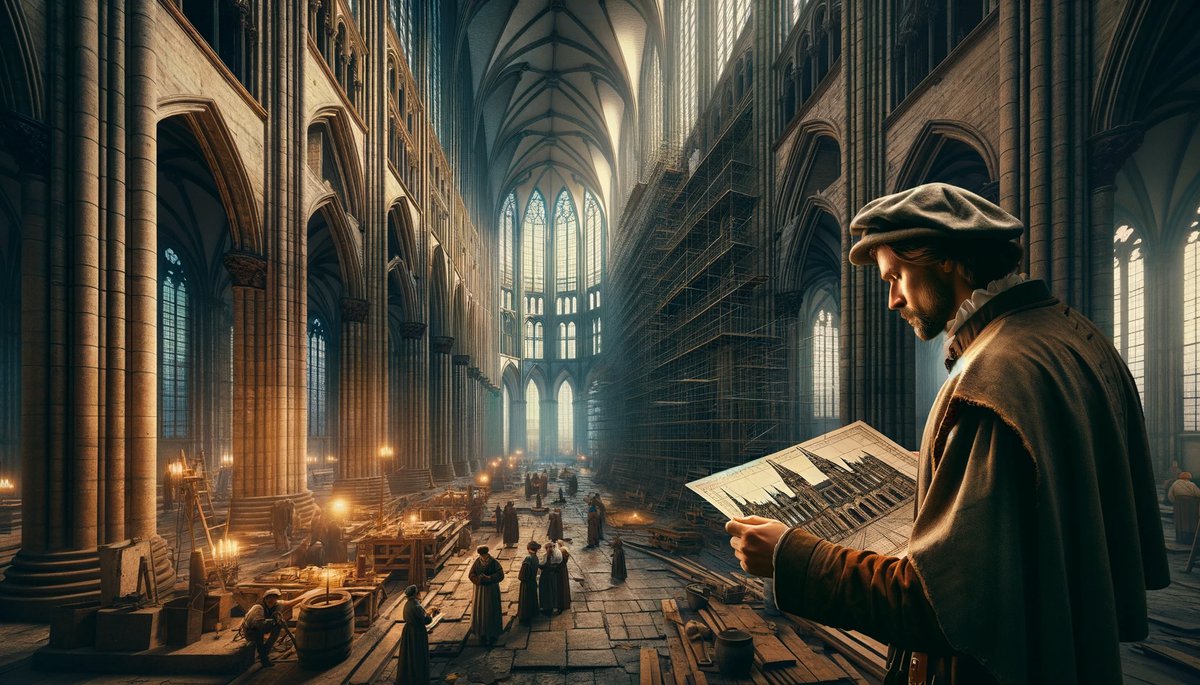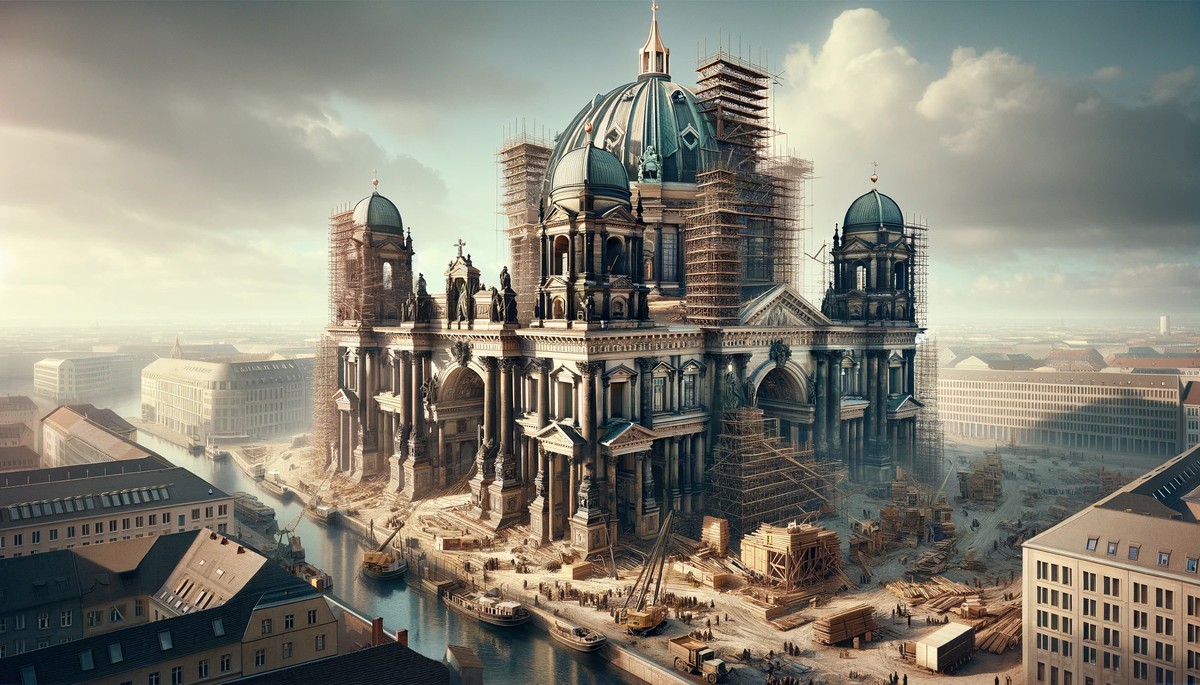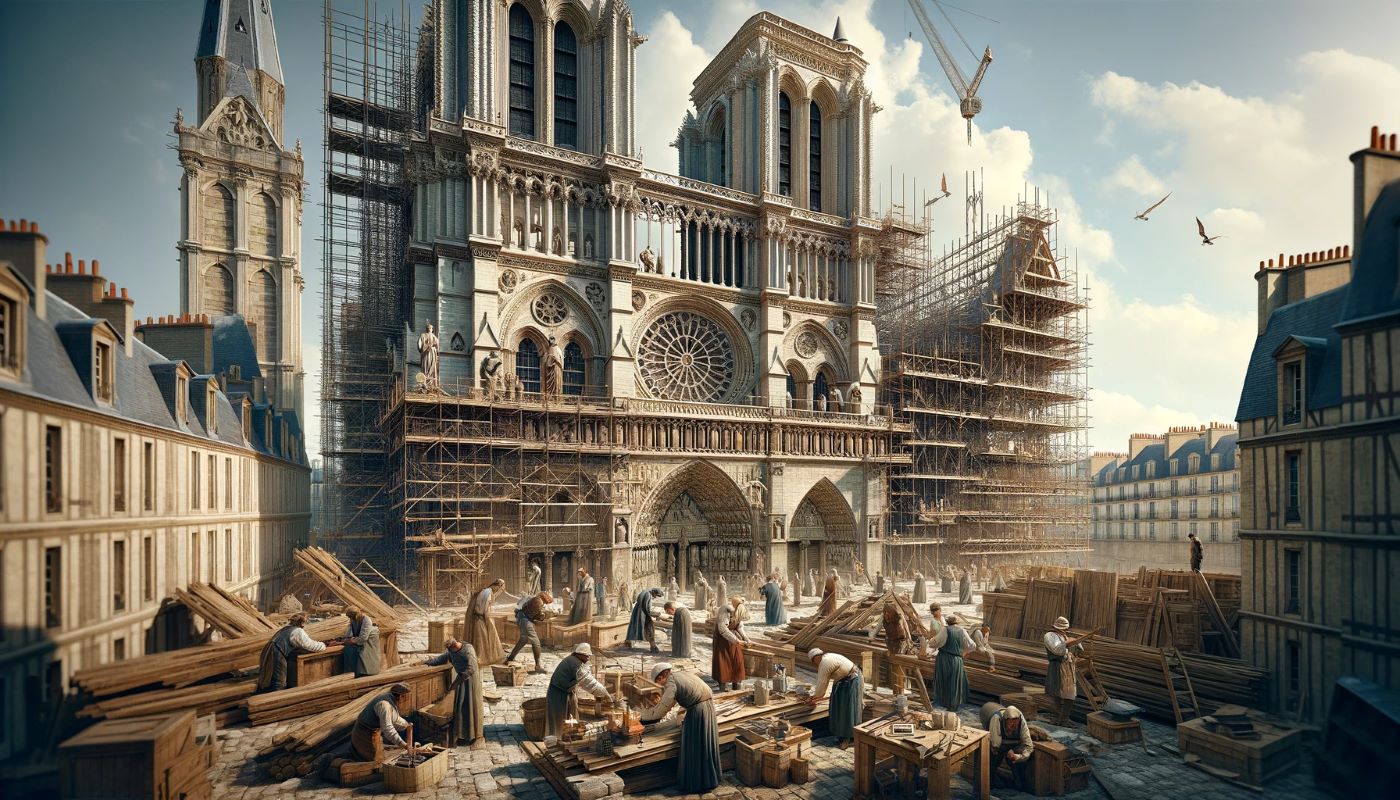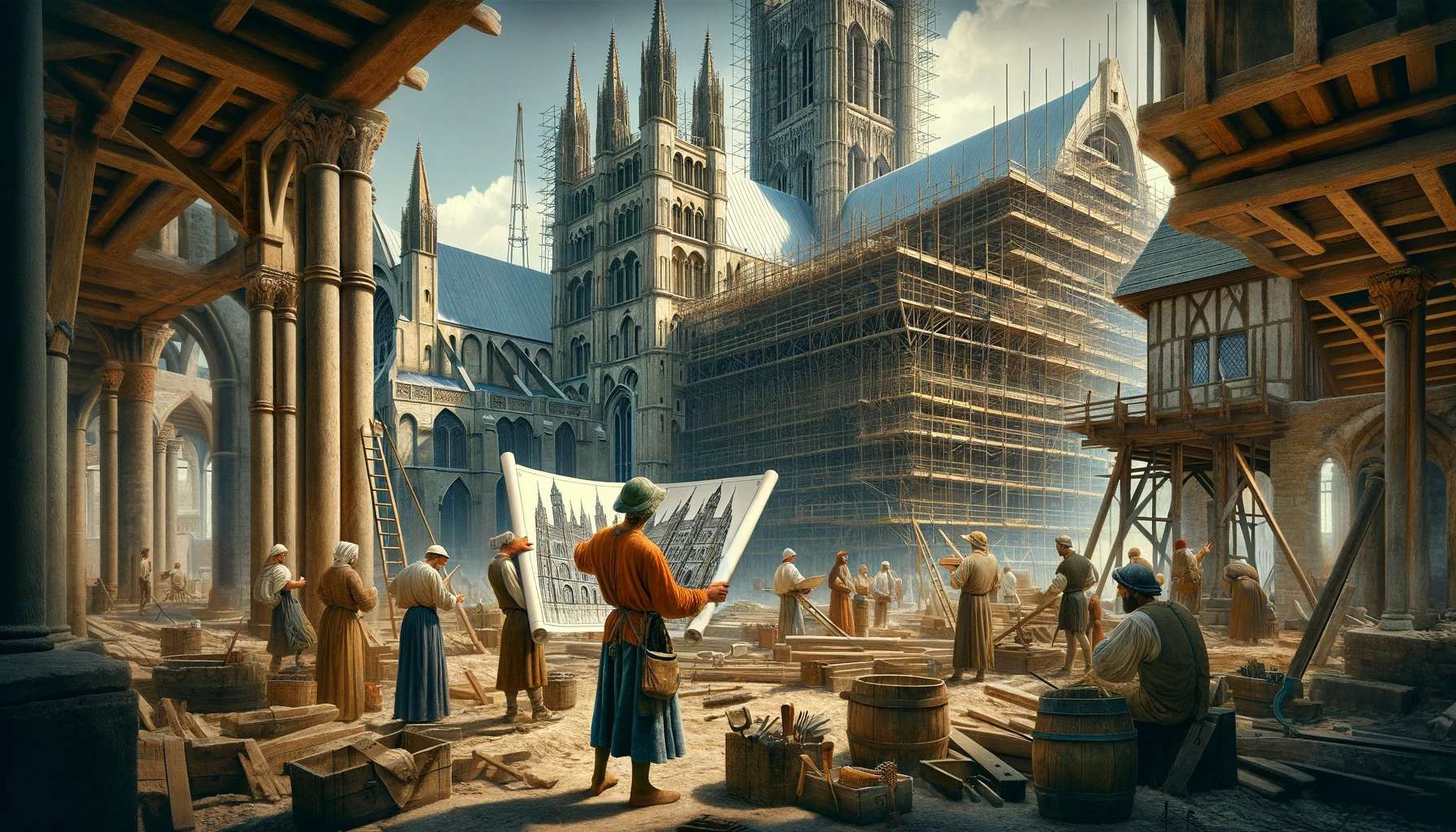Home>Arts and Culture>When Was The Strasbourg Cathedral Built
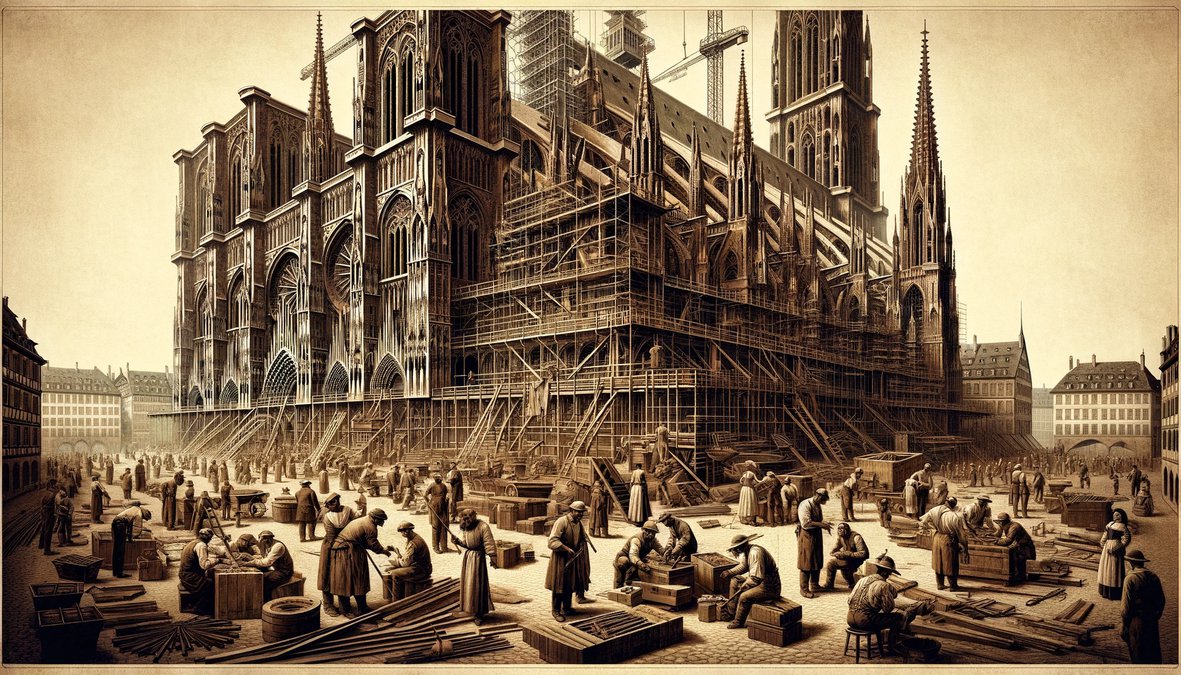

Arts and Culture
When Was The Strasbourg Cathedral Built
Published: February 16, 2024
Peter Smith, Editorial Director at Christian.net, combines deep insights into faith, politics, and culture to lead content creation that resonates widely. Awarded for his contributions to religious discourse, he previously headed a major organization for religious communicators, enhancing dialogue on faith's societal impacts.
Discover the history of the Strasbourg Cathedral, a masterpiece of Gothic architecture, and learn about its construction and significance in arts and culture. Explore the fascinating story behind this iconic landmark.
(Many of the links in this article redirect to a specific reviewed product. Your purchase of these products through affiliate links helps to generate commission for Christian.net, at no extra cost. Learn more)
Table of Contents
Introduction
The Strasbourg Cathedral, also known as the Cathedral of Our Lady of Strasbourg, stands as a testament to the ingenuity and artistry of medieval architecture. This awe-inspiring edifice, located in the heart of Strasbourg, France, has captured the imagination of visitors for centuries. Its soaring spire, intricate carvings, and rich history make it a jewel of Gothic architecture and a symbol of the city's cultural heritage.
The cathedral's imposing presence and intricate details draw countless visitors each year, offering a glimpse into the craftsmanship and devotion of the artisans who brought this masterpiece to life. As we delve into the history, construction, and significance of the Strasbourg Cathedral, we will uncover the stories and secrets that have shaped this iconic structure over the centuries.
Read more: When Was Hereford Cathedral Built
History of the Strasbourg Cathedral
The history of the Strasbourg Cathedral is a tapestry woven with the threads of time, faith, and architectural brilliance. Its origins can be traced back to the 4th century when the first cathedral was built on the site, although the current structure took shape over several centuries. The construction of the cathedral began in the 12th century, and it was not until 1439 that the spire, which remains the tallest in the world, was completed.
Throughout its history, the cathedral has witnessed a myriad of events, including wars, restorations, and the evolution of architectural styles. It has stood as a silent witness to the shifting tides of history, from the tumultuous medieval period to the modern era. The cathedral's survival through these turbulent times is a testament to the resilience and enduring spirit of the people of Strasbourg.
One of the most significant chapters in the cathedral's history unfolded during the Protestant Reformation. In the 16th century, Strasbourg became a focal point of the Reformation, and the cathedral played a pivotal role in this transformative period. The influence of the Reformation left an indelible mark on the cathedral, shaping its identity and adding layers of historical significance.
The cathedral's history is also intertwined with the ebb and flow of artistic and cultural movements. From the intricate sculptures adorning its façade to the mesmerizing stained glass windows, the cathedral reflects the artistic sensibilities of the eras in which it was crafted. Each element of the cathedral tells a story, offering a glimpse into the artistic achievements and spiritual aspirations of the people who contributed to its creation.
As we delve deeper into the history of the Strasbourg Cathedral, we uncover a rich tapestry of human endeavor, faith, and creativity. It is a living testament to the enduring legacy of those who have shaped its story, and it continues to inspire awe and wonder in the hearts of all who behold its majestic beauty.
Construction of the Strasbourg Cathedral
The construction of the Strasbourg Cathedral stands as a monumental feat of human ingenuity and perseverance. The ambitious endeavor to erect this architectural marvel began in the 12th century, with the foundation stone laid in 1015. The cathedral's construction spanned several centuries, bearing witness to the dedication and craftsmanship of countless artisans and laborers.
The cathedral's design and construction were guided by the principles of Gothic architecture, characterized by soaring heights, pointed arches, and intricate ornamentation. The use of innovative architectural techniques, such as flying buttresses and ribbed vaults, allowed for the creation of expansive interior spaces and towering structures that defied the limitations of their time.
One of the most remarkable aspects of the cathedral's construction is its awe-inspiring spire, which reaches a height of 466 feet (142 meters). This remarkable achievement made the Strasbourg Cathedral the tallest building in the world for over two centuries, a testament to the skill and vision of the medieval architects and builders.
The construction of the cathedral was not without its challenges. The sheer scale of the project, combined with the limitations of medieval technology, presented formidable obstacles. Yet, the artisans and laborers persevered, driven by a shared commitment to bring to life a structure that would stand as a testament to their faith and devotion.
The cathedral's construction also reflects the evolving styles and influences of the eras in which it was built. From the Romanesque foundations to the Gothic embellishments, the cathedral bears the imprint of centuries of architectural innovation and artistic expression. Each phase of construction added new layers of complexity and grandeur, culminating in a masterpiece that continues to captivate and inspire visitors from around the world.
As we marvel at the grandeur of the Strasbourg Cathedral, we are reminded of the remarkable achievements of the artisans and laborers who dedicated themselves to its construction. Their legacy endures in the soaring spires, intricate carvings, and timeless beauty of this architectural wonder, a testament to the enduring power of human creativity and determination.
Architectural Features
The Strasbourg Cathedral stands as a pinnacle of Gothic architecture, boasting a myriad of breathtaking architectural features that have captivated visitors for centuries. From its soaring spire to its intricate carvings and mesmerizing stained glass windows, the cathedral is a testament to the ingenuity and artistry of its creators.
The cathedral's most iconic feature is its awe-inspiring spire, which reaches a height of 466 feet (142 meters). This remarkable structure held the title of the world's tallest building for over two centuries, a testament to the ambitious vision and technical prowess of the medieval architects and builders. The spire's delicate lace-like design, adorned with delicate tracery and statues, exemplifies the height of Gothic architectural achievement.
As visitors approach the cathedral, they are greeted by the ornate façade, adorned with a profusion of sculptures and decorative elements. The west front, in particular, is a masterpiece of sculptural artistry, featuring a stunning array of biblical scenes, saints, and allegorical figures. The intricate carvings, meticulously crafted over generations, offer a visual narrative that unfolds across the façade, inviting visitors to immerse themselves in the rich tapestry of religious and historical imagery.
Upon entering the cathedral, visitors are enveloped by the ethereal glow of its stained glass windows. The cathedral boasts an impressive collection of these luminous works of art, which date from the 12th to the 14th centuries. The windows depict a diverse array of biblical narratives, saints, and symbolic motifs, suffusing the interior with a kaleidoscope of color and light. These masterful creations not only serve as a testament to the skill of the medieval glassmakers but also as a source of spiritual inspiration and contemplation for all who behold them.
The interior of the cathedral is adorned with a wealth of architectural details, including ribbed vaults, pointed arches, and soaring columns that create a sense of verticality and grandeur. The intricate tracery of the rose window, the delicate filigree of the choir screen, and the ornate pulpit all bear witness to the consummate skill and artistry of the craftsmen who brought these elements to life.
In every corner of the cathedral, from the lofty heights of the nave to the quiet corners of the chapels, the architectural features of the Strasbourg Cathedral beckon visitors to marvel at the intersection of human creativity and spiritual devotion. Each element, whether grand or subtle, contributes to the cathedral's status as a timeless masterpiece of architectural achievement, inviting all who enter to experience the transcendent beauty of Gothic art and craftsmanship.
Significance of the Strasbourg Cathedral
The Strasbourg Cathedral stands as a profound symbol of faith, artistry, and cultural heritage, holding immense significance that transcends time and borders. As a towering testament to the ingenuity and devotion of its creators, the cathedral embodies a rich tapestry of historical, religious, and artistic significance that continues to resonate with visitors from around the world.
At its core, the cathedral serves as a tangible expression of the spiritual aspirations and religious fervor of the medieval era. Its soaring spire, intricate carvings, and luminous stained glass windows bear witness to the unwavering faith and devotion of the artisans who dedicated themselves to its creation. As a place of worship and pilgrimage, the cathedral has provided solace, inspiration, and a sense of awe to countless generations, fostering a profound connection between the divine and the human spirit.
Beyond its religious significance, the cathedral holds a pivotal place in the cultural identity of Strasbourg and the broader architectural landscape. As a masterpiece of Gothic architecture, it has served as a source of inspiration for countless artists, architects, and scholars, influencing the development of architectural styles and artistic movements across the centuries. Its enduring legacy has left an indelible mark on the cultural heritage of the region, serving as a touchstone for the preservation and celebration of artistic and architectural excellence.
The cathedral's historical significance is equally profound, bearing witness to the ebb and flow of human history and the enduring spirit of the people of Strasbourg. From the tumultuous events of the Protestant Reformation to the ravages of war and restoration, the cathedral has stood as a silent witness to the resilience and fortitude of the community. Its survival through these trials serves as a testament to the enduring power of human creativity and determination, inspiring a sense of resilience and hope in the face of adversity.
As a living monument to the aspirations and achievements of generations past, the Strasbourg Cathedral continues to inspire wonder, contemplation, and a deep appreciation for the enduring legacy of human creativity. Its significance transcends the boundaries of time and place, inviting all who behold its majestic beauty to partake in a timeless journey through the realms of faith, art, and history.
Read more: When Was Exeter Cathedral Built
Conclusion
In conclusion, the Strasbourg Cathedral stands as a timeless testament to the enduring legacy of human creativity, faith, and cultural heritage. From its humble beginnings in the 4th century to its evolution into a masterpiece of Gothic architecture, the cathedral has woven a rich tapestry of history, artistry, and significance that continues to captivate and inspire visitors from around the world.
As we reflect on the cathedral's history, construction, architectural features, and significance, we are reminded of the remarkable achievements of the artisans, laborers, and visionaries who dedicated themselves to its creation. The soaring spire, intricate carvings, and luminous stained glass windows bear witness to the unwavering dedication and skill of those who brought this architectural marvel to life. Each element of the cathedral tells a story, inviting us to immerse ourselves in the cultural, religious, and artistic narratives that have shaped its identity over the centuries.
The cathedral's significance extends far beyond its architectural grandeur. It serves as a profound symbol of faith and spiritual devotion, offering a place of solace, inspiration, and wonder for pilgrims and visitors alike. Its historical and cultural importance is equally profound, bearing witness to the resilience and fortitude of the people of Strasbourg through the tumultuous events of history.
As the sun sets over the cathedral's spires and the evening light bathes its façade in a golden glow, one cannot help but feel a sense of awe and reverence for this timeless masterpiece. The Strasbourg Cathedral invites us to embark on a journey through the annals of human achievement, reminding us of the enduring power of creativity, faith, and the indomitable spirit of the human endeavor.
In the heart of Strasbourg, the cathedral stands as a living testament to the aspirations and achievements of generations past, beckoning us to contemplate the intersection of the divine and the human spirit. Its significance transcends the boundaries of time and place, inviting all who behold its majestic beauty to partake in a timeless journey through the realms of faith, art, and history.
